|
|
 
 Temples, Tombs and Hieroglyphs: A Popular History of Ancient Egypt Temples, Tombs and Hieroglyphs: A Popular History of Ancient Egypt 
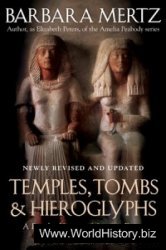 Temples, Tombs and Hieroglyphs: A Popular History of Ancient Egypt Author: Barbara Mertz Tantor Media 2007 Pages: 336 Format: pdf Size: 19 mb Language: English
 
 High Society: The Central Role of Mind-Altering Drugs in History, Science, and Culture High Society: The Central Role of Mind-Altering Drugs in History, Science, and Culture 
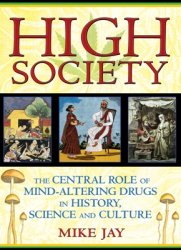 Author: Mike Jay High Society: The Central Role of Mind-Altering Drugs in History, Science, and Culture Park Street Press 2010 Format: pdf, epub Size: 55 Mb + 32 Mb Language: English An illustrated cultural history of drug use from its roots in animal intoxication to its future in designer neurochemicals • Featuring artwork from the upcoming High Society exhibition at the Wellcome Collection in London, one of the world’s greatest medical history collections • Explores the roles drugs play in different cultures as medicines, religious sacraments, status symbols, and coveted trade goods • Reveals how drugs drove the global trade and cultural exchange that made the modern world • Examines the causes of drug prohibitions a century ago and the current “war on drugs” Every society is a high society. Every day people drink coffee on European terraces and kava in Pacific villages; chew betel nut in Indonesian markets and coca leaf on Andean mountainsides; swallow ecstasy tablets in the clubs of Amsterdam and opium pills in the deserts of Rajastan; smoke hashish in Himalayan temples and tobacco and marijuana in every nation on earth. Exploring the spectrum of drug use throughout history--from its roots in animal intoxication to its future in designer neurochemicals--High Society paints vivid portraits of the roles drugs play in different cultures as medicines, religious sacraments, status symbols, and coveted trade goods. From the botanicals of the classical world through the mind-bending self-experiments of 18th- and 19th-century scientists to the synthetic molecules that have transformed our understanding of the brain, Mike Jay reveals how drugs such as tobacco, tea, and opium drove the global trade and cultural exchange that created the modern world and examines the forces that led to the prohibition of opium and cocaine a century ago and the “war on drugs” that rages today.
 
 Trajan Trajan 
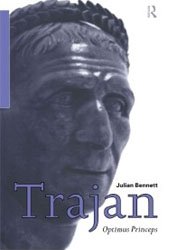 Trajan Author: Julian Bennett Routledge 1997 Pages: 348 ISBN: 0-415-165245 Format: PDF Quality: Good Language: English Size: 7,98 mb
 
 Egyptian Wall Paintings: The Metropolitan Museum of Art's Collection of Facsimiles Egyptian Wall Paintings: The Metropolitan Museum of Art's Collection of Facsimiles 
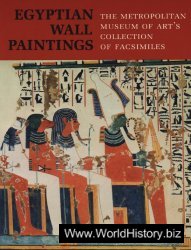 Author: Wilkinson, Charles K. Egyptian Wall Paintings: The Metropolitan Museum of Art's Collection of Facsimiles Metropolitan Museum 1983 Format: PDF Size: 40,44 mb Language: English In 1959 the Metropolitan Museum's Department of Egyptian Art began a reinstallation of its collection. At that time the objectives envisioned were modest: a simple rearrangement for chronological consistency; additional lighting; and a few architectural changes. The project changed with curators and directors, however, and the effort now planned for completion in 1983 is a far-reaching one. All objects in the collection are to be displayed, either in primary or secondary galleries; consequently a review of the condition of each work and a reassessment of its dating and importance were undertaken. Under this program the department's extensive collection of facsimiles of wall decoration, principally produced by the Graphic Section of the Museum's Egyptian Expedition between 1907 and 1937 and supported by the Rogers Fund, received new attention. About half of the facsimiles were exhibited in 1930, accompanied by a small catalogue by Ambrose Lansing, then Associate Curator in the Department of Egyptian Art, and selected examples appeared in the old galleries. In 1976, with the opening of Phase I of the complete reinstallation, virtually all the pictures were placed on exhibition.
 
 Encyclopedia Of The Medieval World (2 Vol. set) Encyclopedia Of The Medieval World (2 Vol. set) 
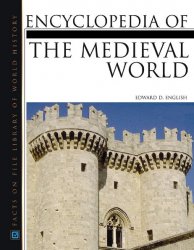 Encyclopedia Of The Medieval World (2 Vol. set) Author: Edward D. English Facts on File 2005 Pages: 920 Language: English Format: pdf Size: 29.6 Mb Having already published Encyclopedia of the Middle Ages,by Matthew Bunson, in 1995 (now out of print), Facts On File offers this new work by a professor of medieval history at the University of California-Santa Barbara. It covers the time period from the late antique world to about 1500 C.E and includes events, people, institutions, and culture in western and eastern Europe, Scandinavia, North Africa, Byzantium, and the Near East. The 2,000 entries discuss significant people, art, politics, literature, religion, economics, law, science, and warfare in an A-Z format. The articles range in length from a few sentences to one page. All have numerous cross-references and a list of further reading that includes both current and classic articles and books. There are also 122 black-and-white illustrations, 19 maps, and 33 genealogical charts of the ruling houses of Europe. The volumes conclude with detailed lists of all the rulers of the various kingdoms, a 50-page bibliography, and a comprehensive index.
 
 Nomads, Tribes, and the State in the Ancient Near East: Cross-disciplinary Perspectives Nomads, Tribes, and the State in the Ancient Near East: Cross-disciplinary Perspectives 
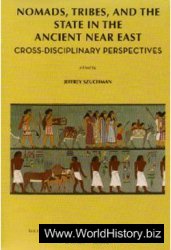 Nomads, Tribes, and the State in the Ancient Near East: Cross-disciplinary Perspectives Author: composite authors The Oriental Institute of the University of Chicago 2009 Pages: 304 Language: English Format: pdf Size: 6.28 Mb For decades, scholars have struggled to understand the complex relationship between pastoral nomadic tribes and sedentary peoples of the Near East. The Oriental Institute's fourth annual post-doc seminar (March 7-8, 2008), Nomads, Tribes, and the State in the Ancient Near East, brought together archaeologists, historians, and anthropologists to discuss new approaches to enduring questions in the study of nomadic peoples, tribes, and states of the past: What social or political bonds link tribes and states? Could nomadic tribes exhibit elements of urbanism or social hierarchies? How can the tools of historical, archaeological, and ethnographic research be integrated to build a dynamic picture of the social landscape of the Near East? This volume presents a range of data and theoretical perspectives from a variety of regions and periods, including prehistoric Iran, ancient Mesopotamia and Egypt, seventh-century Arabia, and nineteenth-century Jordan.
 
 Wild Harvesters: The First People in Scotland Wild Harvesters: The First People in Scotland 
 Author: Bill Finlayson Wild Harvesters: The First People in Scotland B.T. Batsford 1998 ISBN: 0862417791 Language: English Pages: 64 Format: PDF Size: 5,20 МБ his is the story of Scotland's very fine people. From about 8000BC to 4000BC migrant hunter gatherers were slowly moving north as the great ice sheets of the last Ice Age gradually melted. This represents the longest single period in Scotland's past. These peoples did not use metals, farm, or build great monuments, but their success in harvesting the resources available to them allowed them to flourish for thousand of years.
 
 Ancient Athenian Building Methods Ancient Athenian Building Methods 
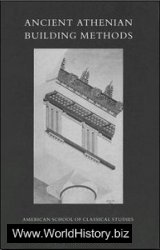 Ancient Athenian Building Methods (Agora Picture Book 21) Author: Camp, J., Dinsmoor Jr., W. B. American School of Classical Studies 1984 ISBN: 0876616260 Pages: 36 Format: PDF Size: 10 mb Language English While this booklet is illustrated solely with materials from the Athenian Agora, it also provides a concise introduction to building styles and techniques that will be useful to anyone interested in ancient Greek architecture. From financing to tools, and from mason’s marks to the clamps that held blocks together, no detail is ommitted in this well-illustrated text. The different parts of monumental buildings, from the foundations to the tile roofs, are all discussed with clear drawings to indicate how the whole was constructed.
 
 Celtic Britain Celtic Britain 
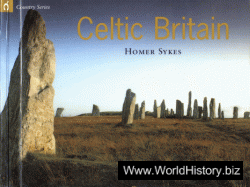 Author: Homer Sykes Celtic Britain Cassell & Co 2001 Format: PDF Pages: 160 Language: English Size: 79 MB Who were the Celts? What part did they play in our land s history? In Celtic Britain, Homer Sykes embarks on a fascinating journey though the mysterious landscapes and artifacts bequeathed to us by the Celts. Over 120 evocative photographs take us from Cornwall, through England, Wales and up to Scotland. We visit little-known sites that belong to pre-Celtic times, ruined cells where Celtic holy men performed Christian ceremonies during the Dark Ages, enigmatic sites such as Stonehenge, Avebury, and places that are shrouded in the mysteries of Arthurian legend. The powerful narrative explores the historical and archaeological evidence surrounding the myths, folktales and sites that are scattered throughout Britain: saints who saved lives by restoring heads to shoulders, eels that coiled around patients legs to cure them, the mystery of the bluestones at Carn Menyn, and many more.
 
 An Archaeological History of Indian Buddhism An Archaeological History of Indian Buddhism 
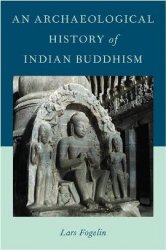 Author: Lars Fogelin An Archaeological History of Indian Buddhism Oxford University Press 2015 Format: PDF Size: 7.45 Mb Language: English An Archaeological History of Indian Buddhism is a comprehensive survey of Indian Buddhism from its origins in the 6th century BCE, through its ascendance in the 1st millennium CE, and its eventual decline in mainland South Asia by the mid-2nd millennium CE. Weaving together studies of archaeological remains, architecture, iconography, inscriptions, and Buddhist historical sources, this book uncovers the quotidian concerns and practices of Buddhist monks and nuns (the sangha), and their lay adherents--concerns and practices often obscured in studies of Buddhism premised largely, if not exclusively, on Buddhist texts. At the heart of Indian Buddhism lies a persistent social contradiction between the desire for individual asceticism versus the need to maintain a coherent community of Buddhists. Before the early 1st millennium CE, the sangha relied heavily on the patronage of kings, guilds, and ordinary Buddhists to support themselves. During this period, the sangha emphasized the communal elements of Buddhism as they sought to establish themselves as the leaders of a coherent religious order. By the mid-1st millennium CE, Buddhist monasteries had become powerful political and economic institutions with extensive landholdings and wealth. This new economic self-sufficiency allowed the sangha to limit their day-to-day interaction with the laity and begin to more fully satisfy their ascetic desires for the first time. This withdrawal from regular interaction with the laity led to the collapse of Buddhism in India in the early-to-mid 2nd millennium CE. In contrast to the ever-changing religious practices of the Buddhist sangha, the Buddhist laity were more conservative--maintaining their religious practices for almost two millennia, even as they nominally shifted their allegiances to rival religious orders. This book also serves as an exemplar for the archaeological study of long-term religious change through the perspectives of practice theory, materiality, and semiotics.
 
 The Romans and their World A Short Introduction The Romans and their World A Short Introduction 
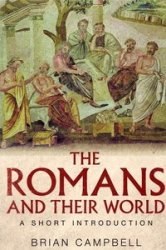 Author: Brian Campbell The Romans and their World A Short Introduction Yale University Press ISBN: 0300117957 2012 Format: PDF Size: 6,5 МБ Language: English Pages: 288 This one-volume history of the Roman world begins with the early years of the republic and carries the story nearly a thousand years forward to 476, when Romulus Augustus, the last Western Roman emperor, was deposed. Brian Campbell, respected scholar and teacher, presents a fascinating and wide-ranging introduction to Rome, drawing on an array of ancient sources and covering topics of interest to readers with little prior background in Roman history as well as those already familiar with the great civilization. Campbell explores several themes, including the fall of the republic, the impact of colorful and diverse emperors on imperial politics, the administrative structure of empire, and the Roman army and how warfare affected the Roman world. He also surveys cultural and social life, including religion and the rise of Christianity. Generously enhanced with maps and illustrations, this book is a rich and inspiring account of a mighty civilization and the citizens who made it so.
 
 Empire of the Inca Empire of the Inca 
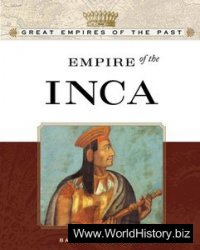 Author: Barbara A. Somervill. Empire of the Inca СерияGreat Empires of the Past Facts on File 2004 Format: pdf Language: English Size: 7,96 mb Inca Empire opens with a brief summary of the Inca Empire that provides a sense of the world and the geographic area in the years leading up to the empire. Using accessible and lively prose, this volume explores the history and culture of this fascinating civilization, making history relevant by highlighting the ideas and items that originated in the empire and are still encountered in the modern world, such as potatoes and jerky, words from the Quechua language, and mobile military field hospitals.
 
 Cretan pictographs and prae-Phoenician script. Cretan pictographs and prae-Phoenician script. 
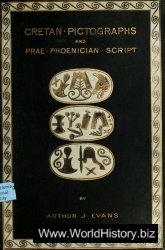 Author: Evans, Arthur, Sir Cretan pictographs and prae-Phoenician script. London : B. Quaritch 1895 Format: PDF Size: 9.15 mb Language: English
 
 The Parthenon Enigma The Parthenon Enigma 
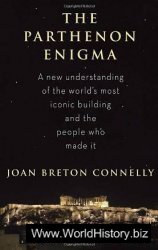 Author: Joan Breton Connelly The Parthenon Enigma Knopf 2014 Format: epub Size: 133 Mb Language: English Built in the fifth century b.c., the Parthenon has been venerated for more than two millennia as the West’s ultimate paragon of beauty and proportion. Since the Enlightenment, it has also come to represent our political ideals, the lavish temple to the goddess Athena serving as the model for our most hallowed civic architecture. But how much do the values of those who built the Parthenon truly correspond with our own? And apart from the significance with which we have invested it, what exactly did this marvel of human hands mean to those who made it? In this revolutionary book, Joan Breton Connelly challenges our most basic assumptions about the Parthenon and the ancient Athenians. Beginning with the natural environment and its rich mythic associations, she re-creates the development of the Acropolis—the Sacred Rock at the heart of the city-state—from its prehistoric origins to its Periklean glory days as a constellation of temples among which the Parthenon stood supreme. In particular, she probes the Parthenon’s legendary frieze: the 525-foot-long relief sculpture that originally encircled the upper reaches before it was partially destroyed by Venetian cannon fire (in the seventeenth century) and most of what remained was shipped off to Britain (in the nineteenth century) among the Elgin marbles. The frieze’s vast enigmatic procession—a dazzling pageant of cavalrymen and elders, musicians and maidens—has for more than two hundred years been thought to represent a scene of annual civic celebration in the birthplace of democracy. But thanks to a once-lost play by Euripides (the discovery of which, in the wrappings of a Hellenistic Egyptian mummy, is only one of this book’s intriguing adventures), Connelly has uncovered a long-buried meaning, a story of human sacrifice set during the city’s mythic founding. In a society startlingly preoccupied with cult ritual, this story was at the core of what it meant to be Athenian. Connelly reveals a world that beggars our popular notions of Athens as a city of staid philosophers, rationalists, and rhetoricians, a world in which our modern secular conception of democracy would have been simply incomprehensible.
 
 The Monastery of Daphni The Monastery of Daphni 
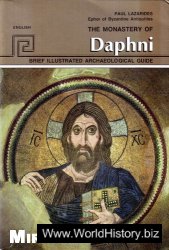 Author: Paul Lazarides The Monastery of Daphni Athens, “Hannibal” 1977 Format: PDF Size: 57,44 mb Language English
 
 The Histories (Vol. I-III, V, VI) The Histories (Vol. I-III, V, VI) 
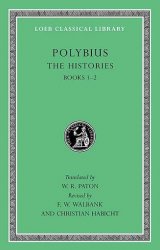 Author: Polybius The Histories (Vol. I-III, V, VI) Harvard University Press The Loeb Classical Library 1922, 1922, 1923, 1926, 1927 (Reprint 1998, 1979, 1979, 1978, 1968) Format: PDF Size: 126,61 mb 452 + 548 + 574 + 560 + 492
 
 El sexo y el amor en la Historia El sexo y el amor en la Historia 
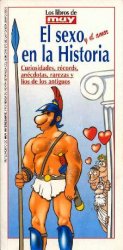 Author: Enrique M.Coperias El sexo y el amor en la Historia (Los libros de Muy interesante) G y J España Ediciones 2004 Format: PDF Size: 29 Mb Language: Spanish La historia de los seres humanos es la historia de su sexualidad. Las relaciones eróticas y sentimentales entre hombres y mujeres han variado mucho de una cultura a otra, estando condicionadas por censuras, tabúes, creencias religiosas, moral y, cómo no, por los avances médicos. En la civilización egipcia el incesto no era algo anormal y ciertas formas de prostitución estaban dedicadas a los dioses. En Grecia, se toleraban la homosexualidad y la pederastia; y con los romanos se llegó al colmo de lo que hoy es considerado un comportamiento depravado. En la Edad Media, sin embargo, la iglesia católica consagra el matrimonio monógamo y declara demoníaco el instinto sexual.
 
 The Art of Rome and Her Empire The Art of Rome and Her Empire 
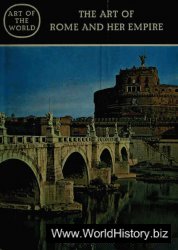 The Art of Rome and Her Empire New York : Greystone Press; Revised Edition edition Author: New York : Greystone Press; Revised Edition edition 1965 Pages: 270 Language:English Format: pdf Size:24,5
 
 An Illustrated Brief History of Western Philosophy An Illustrated Brief History of Western Philosophy 
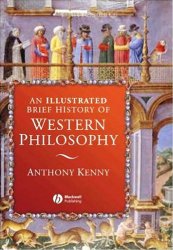 An Illustrated Brief History of Western Philosophy Blackwell Publishing Limited 2006 Pages: 421 Language: English Format: pdf Size: 13.6 Mb This illustrated edition of Sir Anthony Kenny 's acclaimed survey of Western philosophy offers the most concise and compelling story of the complete development of philosophy available. Spanning 2,500 years of thought, An Illustrated Brief History of Western Philosophy provides essential coverage of the most influential philosophers of the Western world, among them Socrates, Plato, Aristotle, Jesus, Augustine, Aquinas, Machiavelli, Descartes, Hobbes, Spinoza, Berkeley, Hume, Rousseau, Kant, Hegel, Marx, Mill, Nietzsche, Darwin, Freud, Frege, Russell, and Wittgenstein. Replete with over 60 illustrations - ranging from Dufresnoy 's The Death of Socrates, through to the title page of Thomas More 's Utopia, portraits of Hobbes and Rousseau, photographs of Charles Darwin and Bertrand Russell, Freud 's own sketch of the Ego and the Id, and Wittgenstein 's Austrian military identity card - this lucid and masterful work is ideal for anyone with an interest in Western thought.
|
|
